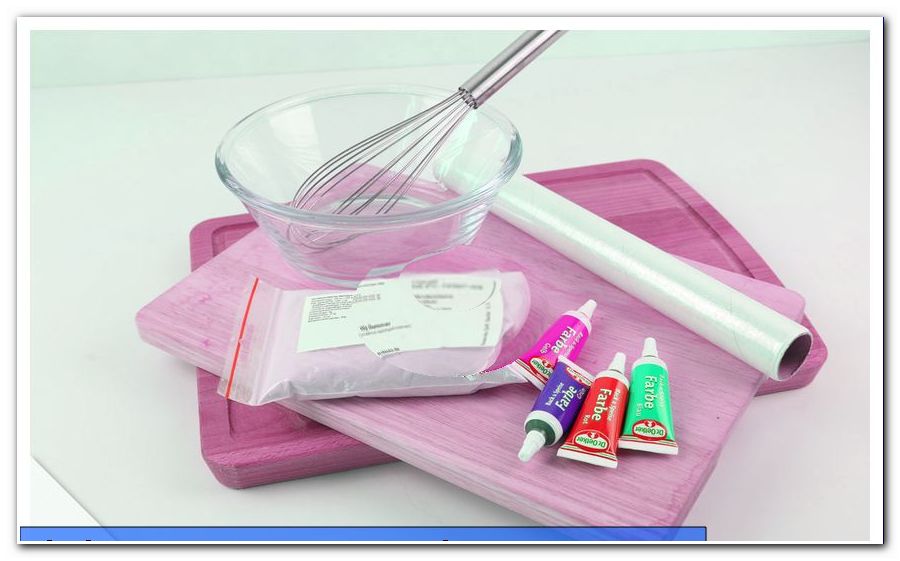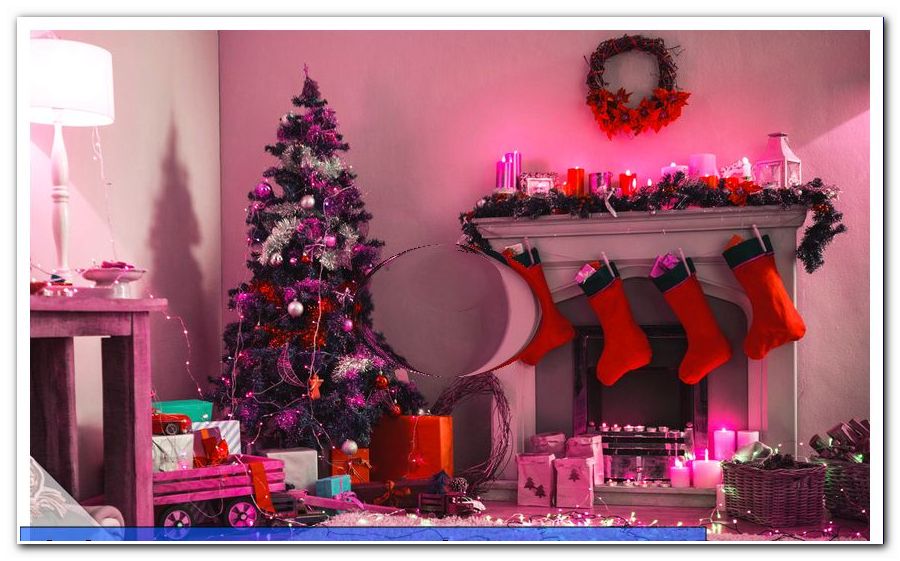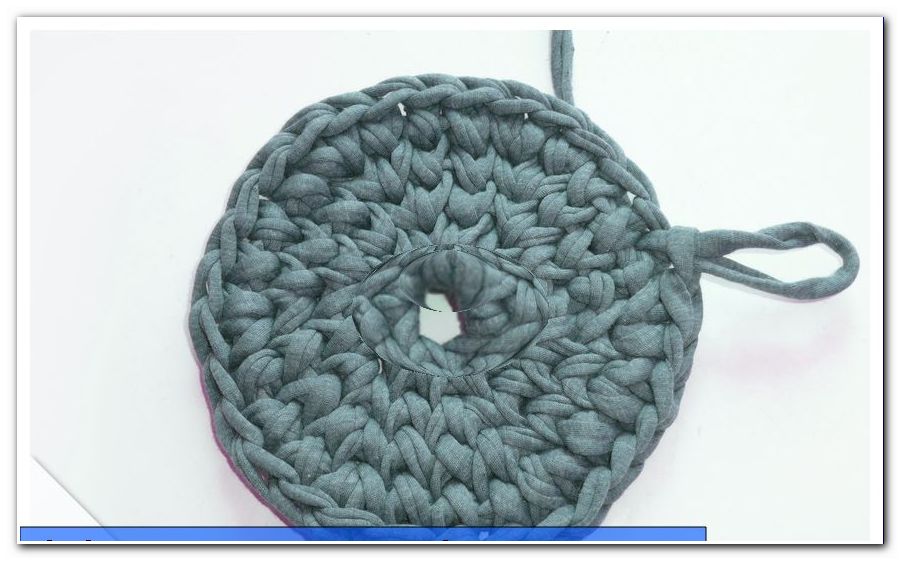Connecting the light switch - Instructions with circuit diagram

- switch types
- safety precautions
- Connection of the on / off switch
- Connection at the changeover circuit
- Connection in series connection
- Connection at cross-connection
- Light switch with socket
After renovations, modernization or new construction, it is often necessary to connect light switches. It is important to know the correct connections to ensure proper and safe operation. Read which connection cables are available and which steps you need to perform.
There are different types of switch types, so first of all an idea of the individual switch types must be made. Here are discussed various types of circuits, such as the series circuit, the cross-circuit and the AC circuit. Then you will learn in the manual how to make the connection. It is important to pay attention to safety and first of all to take appropriate precautions. The connection itself is implemented relatively quickly with the circuit diagram and only requires the connection of the correct cable. No special tools are required for this except a screwdriver and a current tester.
This contribution requires a revision of the . It will be coming soon. Thank you for your comprehension.
switch types
There are several types of switches:
- Off / alternating Switch
- series circuit
- cross circuit
- AC circuit
Type 1: circuit breaker / changeover switch

This switch type is operated with an on / off toggle switch and is one of the most common switch types. It is equipped with two terminals, one of which is responsible for the phase, ie the live conductor and the other for the lamp, so the switched wire. If there is only one lamp in a single room, then the use of this variant is recommended.
Type 2: changeover circuit

The changeover circuit is operated with two changeover switches. The changeover switches themselves are equipped with three terminals:
- Phase (current-carrying conductor) or lamp wire
- two terminals for the correspondents
The two changeover switches are connected to each other via the two wires. The advantage of this circuit variant is that you can switch the connected lamp with the switches independently on and off.
Type 3: Series switch

The series connection is operated with a series switch. This has two separate rocker switches / switch contacts. They are responsible for one lamp each. The connection is made via the same phase. When connecting, you will find three terminals:
- phase
- two for the consumer
By using the series connection, you can operate two loads in a room via a switch.
Type 4: Crossover

A cross circuit consists of a cross switch and two changeover switches. At the crossover switch you will find four terminals. They switch the cross switch between the changeover switches. To do this, connect the two correspondents of the toggle switches to the arrow contacts of the cross switch. Common applications of this type of switch are rooms with three switches and one consumer. You can thus control a lamp from three different points.
safety precautions
Since you work directly on the power lines when connecting light switches, you must first take some precautions:
- Before starting work, go to the safety box and switch off at least the fuses in the relevant room. It is better to turn off all fuses in the house.
Tip: On the inside of the door, you will generally find a list on which you can read which fuse is responsible for the room in question. However, do not blindly trust this listing, as it is often mislabeled. In addition, some light switches in a room can also be secured via the fuse of the neighboring room, since it is not the spatial distribution of the house that is decisive for the electrical system. Thus, circuits may comprise several rooms or there are several circuits for a room.

- Make a note on the fuse box, clearly indicating that work on the power cables is taking place and that the fuses must remain switched off. Alternatively, you can fix the switched-off fuses with a piece of insulating tape in their position.
- Before removing the old light switch, test that the electricity in the room is really on. If it is a new building and there are no consumers connected, then this helps a current inspector. Be careful not to touch the cables with your hands or other conductive objects before checking.
Please also read our article on power cables and their colors.
Connection of the on / off switch
- Clamp the live cable (phase) to terminal "L".
- Attach the switched cable to one of the two contacts.

Tip: By selecting one of the two contacts, you determine whether the toggle switch switches down or up when pressed. In general, it is recommended that the consumer should turn on when the toggle switch is pressed down.
Detailed instructions with laying the cables:
- First, lay the supply line to the light switch. For this is usually a cable NYM 3 × 1.5².
- Next, lay a cable from the switch to the lamp. Again, you can generally use a NYM 3 × 1.5² cable.
- The supply line has a black wire. Clamp this at the switch to terminal "L".
- The cable leading from the lamp also has a black wire. Clamp it on at the switch on the terminal "arrow".
- Now connect the blue and the green / yellow wires of the cables with the help of plug-in terminals.
Connection at the changeover circuit

The changeover switch has three terminals. The contact, as the phase is the live cable. It is color coded and usually black or red. Since this contact is used in the second changeover switch for the wire going to the lamp, it is also called lamp wire. The additional contacts on the changeover switch are usually marked with "arrow", in some cases also with "K". When connecting, connect these two contacts to the contacts on the second toggle switch.
Step-by-step instructions for the changeover circuit
- Use a NYM-J 3 × 1.5² cable and lay it as a lead to the first switch.
Tip: Use a deep switch box because it is clamped.
- Now a cable is laid from the first switch to the second changeover switch. Also use a NYM-J 3 × 1.5² cable.
- Now lay another cable from the second switch to the luminaire (NYM-J 3 × 1.5²).
- Go to the first switch box and clamp the black wire of the supply line at the changeover switch to the terminal "L".
- Now the cable that leads to the second change-over switch is on the line. Take the gray and the brown wire and use them as correspondents.
- Subsequently, at the second changeover switch, the black wire leading to the lamp is clamped on the terminal "L".
Connection in series connection
 When connecting in series, you must first lay a supply line to the switch. Afterwards you lead two cables from the switch to the two consumers.
When connecting in series, you must first lay a supply line to the switch. Afterwards you lead two cables from the switch to the two consumers.
For the connection, connect the black (brown) wire to the switch from the supply cable. Use the terminal "L" for this purpose.
Now the two black (brown) wires of the lamps are connected. Use the "arrow" terminal on the switch for this purpose.
For the blue and green-yellow wires plug-in terminals are now used for the connection.
Connection at cross-connection
There are four terminals on the crossover switch. Turn on the cross switch between the two toggle switches. For the connection, use the two correspondents from the toggle switches and connect them to the arrow contacts.
The first change-over switch must be connected to the phase, ie the live wire. Now the correspondents are connected to the cross switch. From here, the course finally leads to the second changeover switch. The lamp is connected to the P or L contact of the changeover switch.
Light switch with socket
Tip: If the switch is located above the power outlet, a child safety lock can prevent you or others from accidentally picking up the electrical outlet in the dark.
There is a power outlet under many light switches. In this case, both components are connected together:
- Step: First connect the black cable. Use the "L" terminal of the light switch for this purpose.
- Step: The brown cable is connected to the output "arrow".
- Step: The yellow-green cable is the protective conductor. Connect this to the protective contact. The corresponding terminal is usually located in the middle of the socket.
- Step: Connect the blue wire to the left terminal of the socket.
- Step: Connect the black lead to the right clamp of the can.
- Step: Then install the socket and the light switch and tighten them.
Tips for quick readers:
- Switch off fuses
- Secure fuses against being switched on again
- Check the absence of current
- Lay the supply line to the light switch
- simple switch:
- Lay the cable from the switch to the lamp
- clamp the black wire at the switch to "L"
- from the lamp coming black cable to "arrow"
- for the blue and green / yellow wires use plug-in terminals
- Light switch can be combined with socket
IMPORTANT: Make sure at all times that the power is off. When working on heavy current, the expert recommends. Likewise, if you have any concerns.




